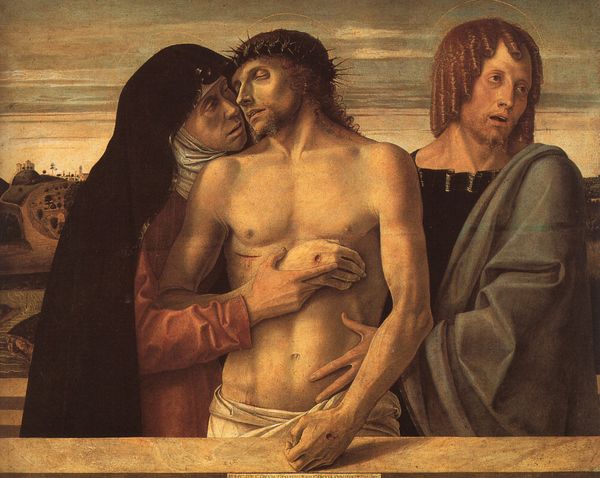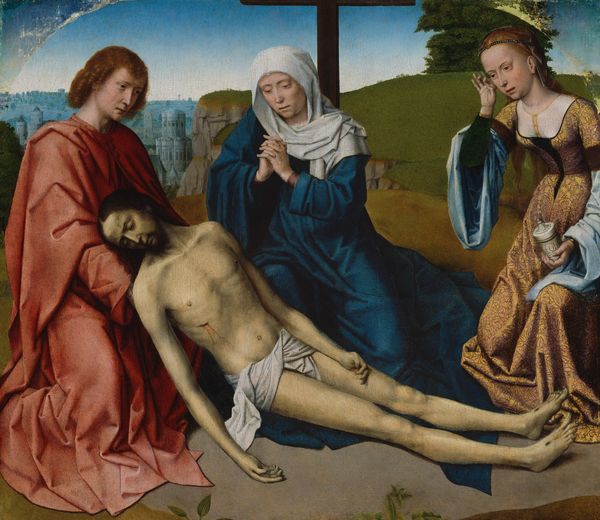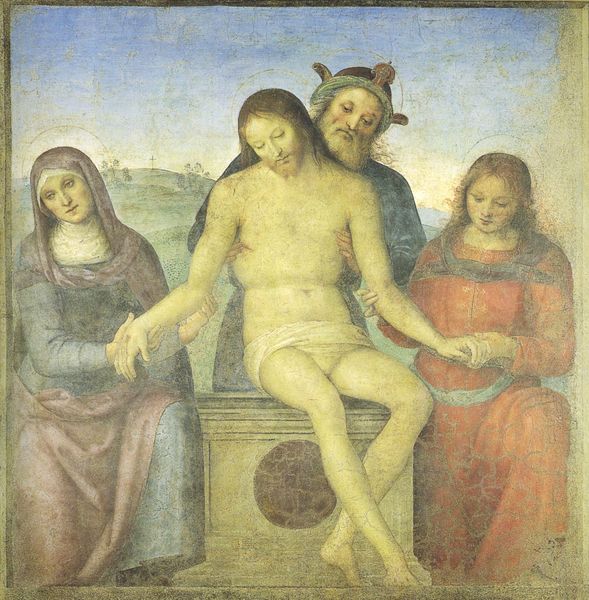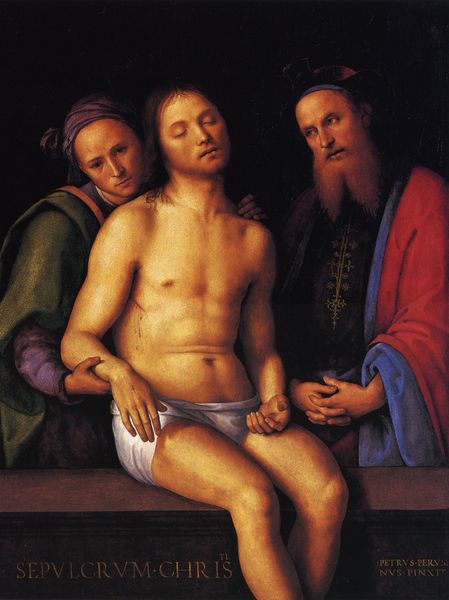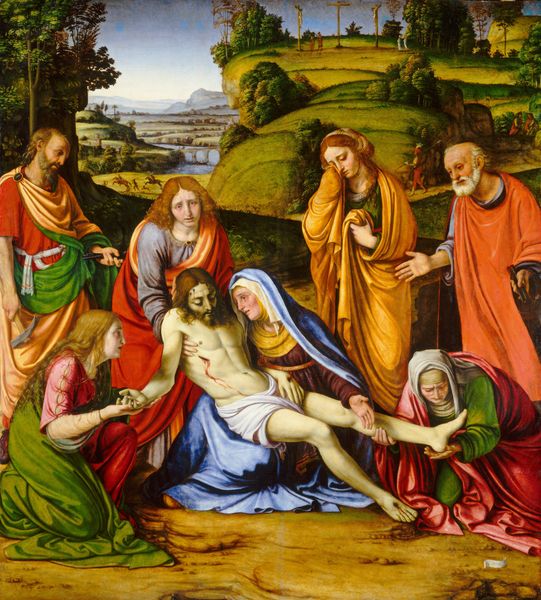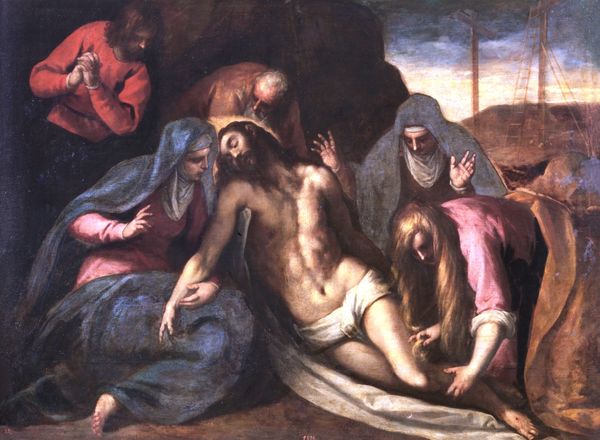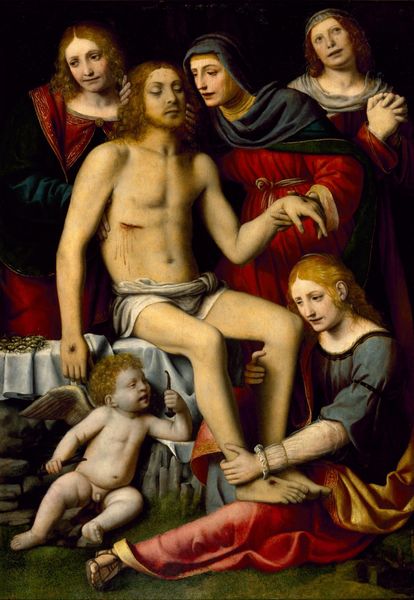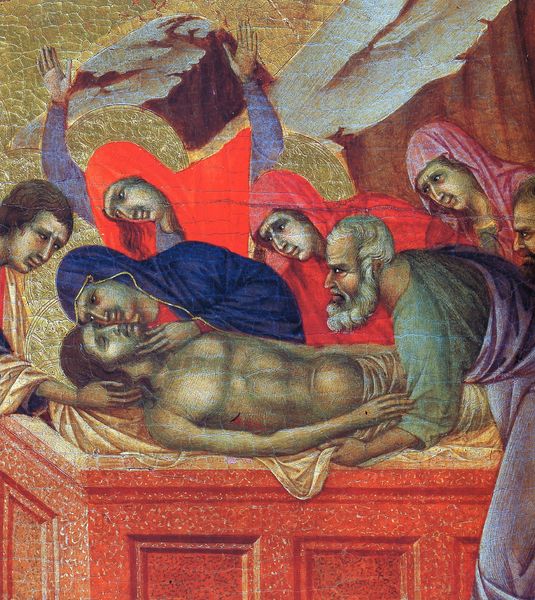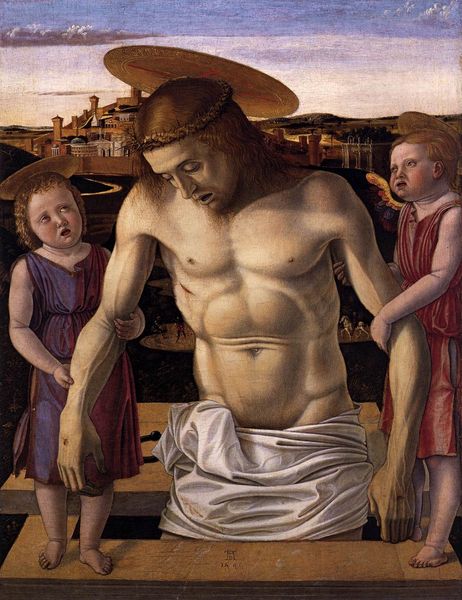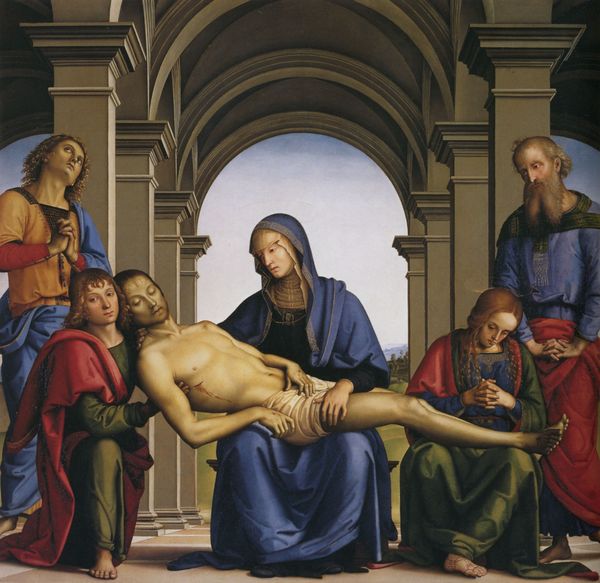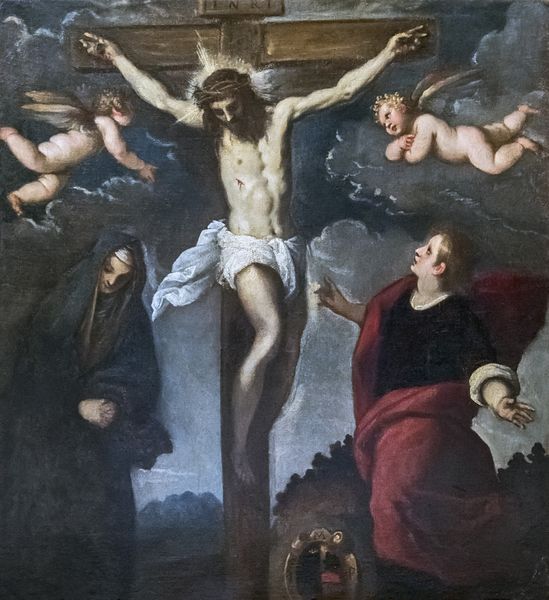
oil-paint
#
narrative-art
#
oil-paint
#
figuration
#
11_renaissance
#
oil painting
#
christianity
#
history-painting
#
academic-art
#
italian-renaissance
Copyright: Public domain
Pietro Perugino painted this oil on wood panel, known as the Pala di Sant'Agostino, in Italy during the Renaissance. The scene depicts the lamentation of Christ, a common subject in religious art of the period. However, Perugino’s choices reflect the social and cultural context in which he operated. The figures are idealized and serene, embodying the Renaissance pursuit of classical beauty and harmony. The balanced composition and clear perspective, hallmarks of the High Renaissance, cater to a sophisticated, educated audience. It’s interesting to note Perugino's position within the art world; he ran a successful workshop and trained artists like Raphael. His style, while admired, was also criticized later for being overly conventional. Understanding this artwork requires us to consider its place within the religious institutions of the time, and to examine the patronage system that shaped its creation. Art historians consult a wide range of sources, from contracts and account books to theological treatises and contemporary biographies, to reveal the complex interplay of factors that shaped the production and reception of this beautiful, yet historically contingent, work.
Comments
No comments
Be the first to comment and join the conversation on the ultimate creative platform.
